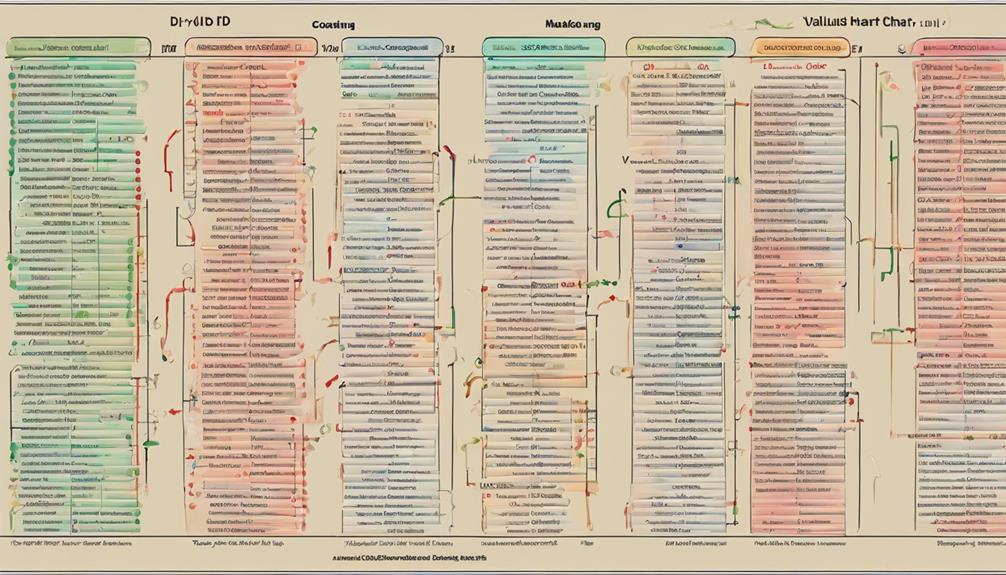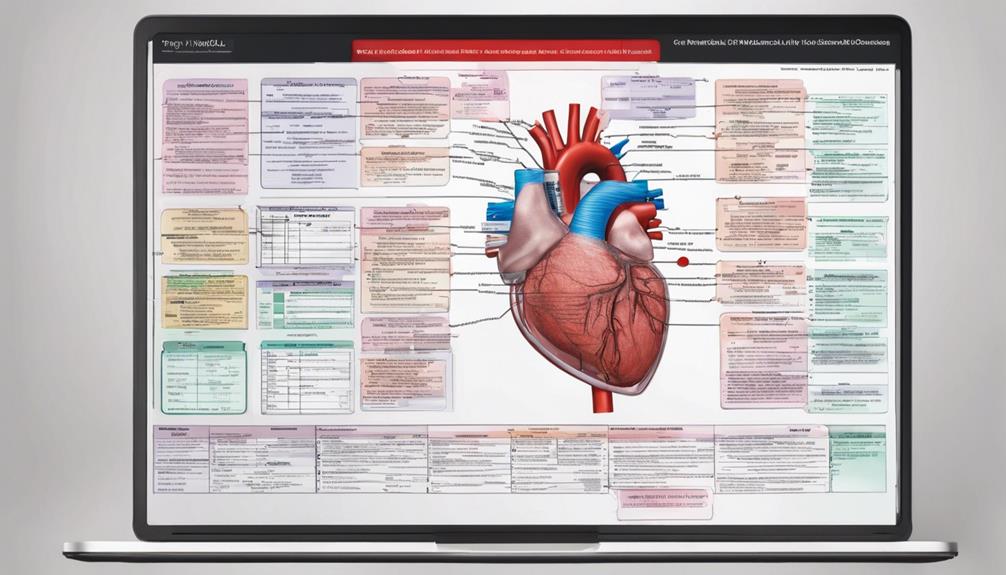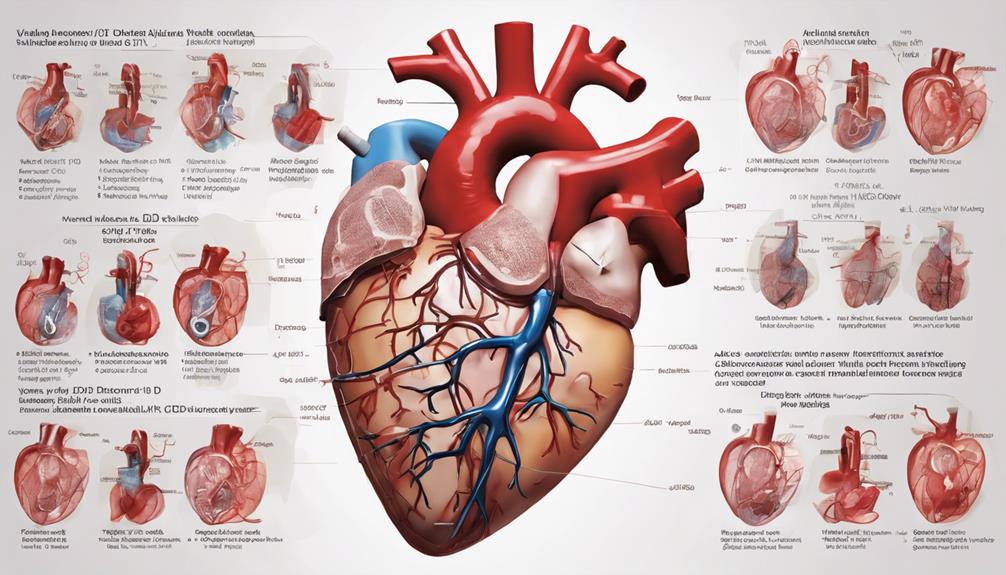Understanding ICD-10 codes for Valvular Heart Disease is like navigating a complex mosaic in the world of medical coding.
As we explore the nuances of these codes and their implications for healthcare providers, a deeper understanding of the classification and documentation requirements emerges.
Stay tuned to unravel the layers of specificity, documentation nuances, and billing intricacies surrounding Valvular Heart Disease ICD-10, shedding light on essential considerations for accurate coding and reimbursement in this domain.
Overview of Valvular Heart Disease ICD-10
Valvular Heart Disease ICD-10 encompasses a comprehensive classification system for coding various types of valvular heart conditions, aiding in accurate diagnosis and treatment. One key ICD-10 code, I35.0, specifically addresses nonrheumatic aortic valve stenosis. This code helps healthcare providers accurately document and track this condition, enabling appropriate management strategies to be implemented promptly.
When considering valvular heart disease, another relevant ICD-10 code is I05.8, which pertains to other rheumatic mitral valve diseases. Proper coding using this system ensures that healthcare professionals can effectively communicate about the specific valvular issues a patient may be facing, leading to targeted treatments and interventions.
Diagnosing valvular heart disease involves a thorough assessment, including a detailed patient history, comprehensive physical examination, and often an echocardiogram. Symptoms such as chest pain can be indicative of valvular dysfunction, prompting further investigation and management to address potential impaired valve function and its associated complications.
Coding Guidelines and Specificity

Exploring the intricate coding guidelines and specificity in ICD-10 for valvular heart disease reveals a meticulous framework essential for accurate diagnosis and treatment planning. The ICD-10-CM Diagnosis Code system offers specific codes such as I05.0, I05.8, I34.0, I35.0, and I35.8, which cater to various conditions like rheumatic mitral stenosis, nonrheumatic aortic stenosis, and other valvular disorders. These codes play a crucial role in the classification of valvular heart disease, distinguishing between congenital and acquired forms that impact the heart valves' functionality.
Accurate coding is vital not only for precise diagnosis but also for proper billing and reimbursement processes. Healthcare providers rely on the specificity of ICD-10 codes to ensure comprehensive documentation of valvular heart conditions, facilitating streamlined billing procedures and maximizing reimbursement efficiency. Understanding the nuances within the coding guidelines is paramount for healthcare professionals involved in managing patients with valvular heart disease, as it ultimately leads to improved patient care and financial outcomes.
Common ICD-10 Codes for Valvular Heart Disease
Transitioning from the intricacies of coding guidelines and specificity in ICD-10 for valvular heart disease, we now focus on the common ICD-10 codes utilized to classify various forms of valvular heart conditions. When assigning codes for valvular heart disease, healthcare professionals often encounter specific ICD-10 classifications that help differentiate between different types of conditions.
Some common ICD-10 codes for valvular heart disease include:
- I05.0: Rheumatic mitral stenosis, indicating a narrowing of the mitral valve due to rheumatic fever.
- I34.0: Nonrheumatic mitral insufficiency, showcasing a mitral valve leakage not caused by rheumatic fever.
- I35.0: Nonrheumatic aortic stenosis, a condition where the aortic valve is narrowed due to non-rheumatic factors.
- I05.8: Other rheumatic mitral valve diseases, covering a spectrum of mitral valve conditions related to rheumatic fever.
These codes play a crucial role in accurately documenting and billing for valvular heart conditions, ensuring proper treatment and management for patients.
Documentation Tips for Accurate Coding

To accurately assign ICD-10 codes for valvular heart disease, meticulous documentation of specific details is essential. This includes information on the type and severity of the condition, underlying causes, interventions, and relevant clinical data.
When documenting valvular heart disease, it is crucial to specify the affected valve and the type of disease present, such as aortic stenosis or mitral regurgitation. The severity of valvular dysfunction should be described using terms like mild, moderate, or severe to reflect the clinical status accurately.
Documentation should also include any underlying causes contributing to the disease, such as congenital malformations or conditions like rheumatic fever. Details of procedures or interventions performed for the valvular disease, such as valve replacement or repair, should be included to support the assigned codes.
Comprehensive documentation should encompass the patient's symptoms, diagnostic test results (such as echocardiogram findings), and the outlined treatment plans. By detailing these aspects in the documentation, accurate coding for valvular heart disease can be achieved.
Reimbursement and Billing Considerations
For accurate reimbursement and efficient billing of valvular heart disease cases, mastering specific ICD-10-CM codes like I05.0, I05.8, I34.0, I35.0, and I35.8 is crucial. Proper ICD-10-CM coding ensures that reimbursement claims for valvular heart diseases are processed correctly, leading to proper payment.
Here are some key considerations for billing valve disorders related to valvular heart diseases:
- Understanding the nuances of ICD-10-CM coding for different valve disorders is essential for accurate billing.
- Utilizing the correct ICD-10-CM codes such as I05.0 and I35.8 is crucial for proper reimbursement.
- Compliance with coding guidelines and conventions is vital for financial management in valvular heart disease cases.
- Regular updates and training on ICD-10-CM coding for valve disorders help in optimizing billing processes and ensuring correct payment.
Frequently Asked Questions
What Is the ICD-10 Code for Heart Disease?
We can help with that.
The ICD-10 code for heart disease is I35.9, specifically for nonrheumatic aortic valve disorder. This code is billable and specific for reimbursement purposes post-October 1, 2015.
It covers lesions related to the aortic valve and falls within the range of I00-I99 in the 2024 ICD-10-CM edition. Proper use of I35.9 is crucial for accurate billing, coding, and healthcare data exchange.
What Is Valvular Heart Disease?
Valvular heart disease refers to conditions affecting the heart valves, leading to impaired function. It encompasses issues like aortic stenosis, regurgitation, mitral stenosis, and regurgitation.
Symptoms include shortness of breath, chest pain, and fatigue. Diagnosis involves a thorough history, physical exam, and echocardiogram.
Treatment may include medication or surgical intervention, depending on the severity. Living with valvular heart disease requires ongoing monitoring and lifestyle adjustments.
Is Valvular Heart Disease the Same as Congestive Heart Failure?
Yes, valvular heart disease and congestive heart failure are distinct conditions. Valvular heart disease involves abnormalities in the heart valves, impacting blood flow, while congestive heart failure is when the heart struggles to pump effectively.
However, severe valve issues in valvular heart disease can lead to heart failure. Understanding these differences is crucial for proper diagnosis and treatment to improve patient outcomes.
What Is the ICD-9 Code for Valvular Heart Disease?
We used ICD-9 code 424.1 to classify aortic valve disorders. This code was specific to valvular heart disease cases before the transition to ICD-10. It helped in billing and tracking patients with conditions like aortic stenosis or insufficiency.
The ICD-9 system was efficient for this purpose, but the updated ICD-10 system offers more detailed classification and information on various heart diseases.
Conclusion
In conclusion, navigating the complex landscape of valvular heart disease ICD-10 codes is crucial for accurate diagnosis and coding. Just like a skilled navigator guiding a ship through treacherous waters, understanding the specific codes and documentation requirements ensures proper reimbursement and effective management of these conditions.
Stay vigilant, chart your course with precision, and sail towards successful coding and billing practices in valvular heart disease.









